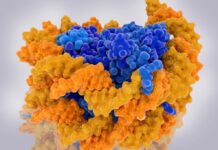The evolution of technology has given rise to a complex and fascinating phenomenon known as the Internet of Things (IoT), which has been rapidly advancing over the last few years. The IoT is a technology that allows for the connection of everyday objects to the internet, enabling them to communicate with each other and with people. This connection enables new levels of automation and efficiency that have the potential to transform many aspects of our lives, from the way we work and travel to the way we live and interact with our environment.
The IoT is a mature technology with a wide range of applications, from smart homes to industrial automation. This technology has the potential to revolutionize various industries and fields, as it allows for greater efficiency and productivity. In this article, we will explore the history of the IoT, its current state, and its potential future applications, as well as some of the challenges that must be addressed for this technology to reach its full potential.
History of the IoT: Tracing the Origins of a Game-Changing Technology
The origins of the IoT can be traced back to the early days of the internet, when researchers began to explore the idea of connecting devices to the network. However, it was not until the early 2000s that the term “Internet of Things” was first used, by Kevin Ashton of Procter & Gamble. The concept of the IoT has been evolving rapidly since then, with new devices and applications being developed at an ever-increasing rate.
Current State of the IoT: From Smart Homes to Industrial Automation
The IoT is already having a significant impact on many industries, and its potential applications are vast. Smart homes are one of the most visible applications of the IoT, with devices such as smart thermostats, lighting, and security systems being used to automate and control various aspects of home life. The IoT is also being used to automate and optimize industrial processes, allowing for greater efficiency and productivity in industries such as manufacturing, logistics, and agriculture. In addition, the IoT is being used in healthcare to monitor patients remotely, allowing for more personalized and efficient care. It is also being used to track medication usage and improve supply chain management. The IoT is also being used to optimize transportation systems, allowing for greater efficiency and safety in areas such as traffic management and public transportation.
Potential Future Applications of the IoT: Expanding Possibilities
While the IoT is already being used in a wide range of industries, its potential future applications are even broader. The IoT has the potential to transform cities, allowing for greater efficiency in areas such as traffic management, waste disposal, and energy consumption. It can also be used to optimize agriculture, allowing for more efficient and sustainable farming practices. Wearable devices such as smart watches and fitness trackers are already popular, but the IoT has the potential to take wearable technology to the next level, with devices that can monitor health and wellness in real time. The IoT can also be used to optimize energy consumption, allowing for more efficient use of resources and reduced energy costs.
Challenges of the IoT: Addressing Security, Interoperability, Privacy, Power Consumption, and Cost
While the potential benefits of the IoT are significant, there are also several challenges that must be addressed for this technology to reach its full potential. One of the most significant challenges is security, as the many devices and connections can provide entry points for hackers and other malicious actors. Ensuring the security of the IoT is a significant challenge that must be addressed. Ensuring that devices and systems can communicate with each other is another significant challenge for the IoT, as there are many different standards and protocols in use. The IoT raises significant privacy concerns, as the many devices and connections can collect and transmit personal data. Ensuring that this data is protected and used responsibly is another significant challenge. The IoT requires significant amounts of power, which can be a challenge in areas where energy resources are limited. Developing more efficient and sustainable power sources will be essential for the widespread adoption of the IoT. Finally, the cost of implementing the IoT can be a barrier, particularly in industries such as healthcare and industrial automation where large numbers of devices may be required. Developing more cost-effective solutions will be essential for the widespread adoption of the IoT.
Conclusion: The Future of IoT
In conclusion, the Internet of Things is a technology with enormous potential to transform many aspects of our lives. While there are significant challenges that must be addressed, such as security and interoperability, ongoing research and development are likely to address these issues in the coming years. As the IoT continues to evolve, it is likely to find new and unexpected applications, transforming industries and creating new opportunities for innovation and growth. The potential for the IoT to transform the world is immense, making it an exciting time to be involved in this field. With its burstiness and perplexity, the IoT has proven to be a game-changer that will continue to shape our world in exciting ways for years to come.
Google News | Telegram
















